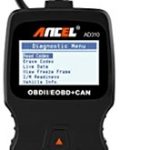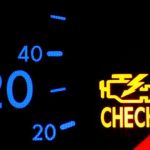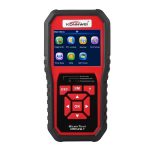When your car gives you a “9” or an “8,” the issue may be related to the transmission or a sensor. If you see an “8” in your car’s computer screen, you should contact your dealer right away. In the meantime, you can look up the meaning of eobd codes. Learn about the OBD communication protocol and how to interpret these trouble codes to fix your car. Here are a few examples.
OBD communication protocol
On-board diagnostics (OBD) is the process of detecting and correcting engine problems. Most vehicles are equipped with one or more of these systems. The standard was implemented by the California Air Resources Board to control polluting emissions. The advent of electronic computers made this possible. Either way, the OBD standard is an essential part of modern vehicles. Listed below are some of the most common codes and what they mean.
The OBD communication protocol is the language of the Engine Control Unit (ECU). This system was designed to combat engine failures and emissions, and to provide access to other parts and features of the vehicle. The OBD communication protocol allows drivers to read diagnostic trouble codes and repair problems. However, some older vehicles aren’t equipped with these systems. Therefore, it’s imperative that you understand how to read these codes.
Each mode has a list of PIDs. For example, PID 0D stands for Vehicle Speed. The PIDs are described as hex-encoded values. There is also a formula for converting PID values into corresponding values. The formula for speed conversion is: 256 * A/B / 4
The European version of the OBD standard is known as EOBD. It is substantially similar to the American OBD-II. In Europe, the standard is mandatory since 2001. OBD-II is not as common. Regardless of your car’s manufacturer, the information sent from the diagnostic system must be compatible with your vehicle. If you don’t know the meaning of the codes, don’t worry. Just do your research and learn all you can about the EOBD communication protocol.
The data being transferred is divided into modes. One mode is the ‘current data’ mode. The other modes are used to display the data of the stored trouble codes, or freeze frame data. The PID values are encoded as strings. Once you understand the basic concepts behind OBD codes, you can start repairing your car. It is important to know that your car has PIDs to help prevent accidents and improve safety.
A car’s OBD can be configured to send data to a central server. Manufacturers can choose to collect data in this way or not. The argument behind central server proposals revolves around privacy and security. However, many see this as a commercial move. The central server proposals may disrupt the market for third party OBD2 data loggers. You can choose a device that saves you money while letting you read OBD data from any car.
As mentioned above, the EOBD communication protocol is used for diagnosing faults. It has two sub-protocols and is widely used among European manufacturers. The ISO14230 protocol repeats the main characteristics of the ISO9141 protocol. The second sub-protocol is the SAE J2818. The first specifies the level of initialisation. It was used by German car makers before the EOBD standard was introduced. General Motors and Ford use this protocol.
Diagnostic trouble codes
EOBD, or electronic on-board diagnostics, has a system for communicating with a car. The system uses four digits and a letter prefix to indicate faults. The codes are retrieved by a scan tool. The first digit specifies the type of code and the second digit indicates the specific system a car has. The last two digits are fault designations that are unique to a specific car model.
A vehicle’s EOBD system uses alphanumeric codes called “diagnostic trouble codes” to identify problems with the on-board computer. These trouble codes are the result of an inspection and are used to diagnose engine problems. These codes are best understood when they are used in conjunction with a car’s owner’s manual, a professional OBD 2 diagnostic tool, and an OBD2 code reader.
The first thing you should do if you notice a malfunction in your vehicle is to check the codes that are generated by your vehicle’s EOBD. A P0442 code for example means there is a leak in the evaporative emission system. In many cases, the code may be the result of a more serious problem. Diagnostic trouble codes can be used to determine the cause of vehicle problems and are published by the Society of Automotive Engineers.
A DTC will tell you if your car is having problems, but it also warns you of a problem that may happen in the future. It can also alert you to an inaccurate problem, like a muddled MAF sensor. The information you receive with an OBD 2 scanner will help you understand the problem and repair it if needed. They are the best tools to use to make your car work again.
Once you have identified a possible problem, you can look at the DTCs. If there are more than one, the top DTCs should be addressed first. Otherwise, the lower ones could be symptoms of the higher DTC. Hence, it is important to understand how DTCs are generated. If you are unsure of how to read trouble codes, you can check your car manual or consult your manufacturer for the necessary information.
Usually, engine code “P” means that the emission control system is faulty. If it occurs again, the Check Engine Light will turn on. If the problem persists, a PTC becomes an Active code. P-codes cover engine, transmission, fuel, ignition, and emissions. While B-codes are for airbags, C-codes cover brake fluid and axles. U-codes refer to shared computer systems and the network and vehicle integration system.
Moreover, P1xxx codes cover other areas that are not related to emissions. The third digit in a P1xxx code indicates the system or component where the fault occurred. For example, cylinder one in the injector circuit is malfunctioning. Likewise, cylinder two has an issue with the knock sensor. This is the most common reason for a P-0xxx code to appear on the car’s dashboard.
Meaning of eobd codes
OBD codes are the code designations that indicate various aspects of the car’s engine, transmission, and other systems. These codes will be categorized according to the part of the vehicle that they relate to, from the engine to the chassis. The first letter in a code tells if it’s generic, or if the vehicle manufacturer has a specific code for that model. If the code does not relate to the engine, it should be read as an unrelated trouble code.
There are two types of EOBD codes: generic and manufacturer-specific. A generic code begins with P0, while a manufacturer-specific code starts with P1. There are additional code groups to further simplify the code list. While manufacturers are not required to use a common numbering scheme, there are several ways to interpret these codes. Manufacturer-defined codes are the most common ones, which are also the most important to understand.
Active Codes refer to malfunctions that cause the Check Engine light to stay lit. Pending Codes refer to errors that have occurred at least once and will become Active if they recur. Pending codes contain information about the failure and its cause. They are also helpful when you’re trying to determine which vehicle parts need repairs. When a car is experiencing a malfunction, the most common reason for this code is a faulty part.
OBD2 codes are used in cars built from 1996 and newer. There are two types of obd codes: Type 1 and Type 2. Both can cause immediate and severe damage. Type 1 obd codes illuminate the MIL, while Type 2 obd codes create a freeze frame that shows a trouble code. When one of these codes occurs, it indicates a system failure. Further troubleshooting is required to repair or replace the vehicle.
The OBD system first appeared in the early 1980s. It turned on the check engine light when a problem occurred, but codes differed by manufacturer. The lack of standardization made it difficult to diagnose faults. In 1996, the OBDII specification was made mandatory on all cars, making it much easier for mechanics to identify the exact problem. This standard specifies the type of diagnostic connector, the message format, and electrical signaling protocols. OBD tools quickly became a popular option among consumers.
If you’re looking for an online resource for OBD code interpretation, then this is the place for you. Using a good online tool, you can learn what the codes mean and fix it without spending hours figuring out which parts of the car are malfunctioning. There are also some simple hand-held scanners you can use to read and interpret OBD codes, so you can get the information you need quickly and easily.






